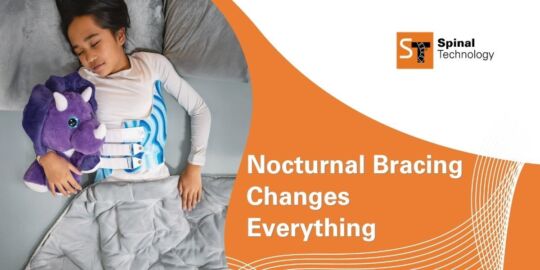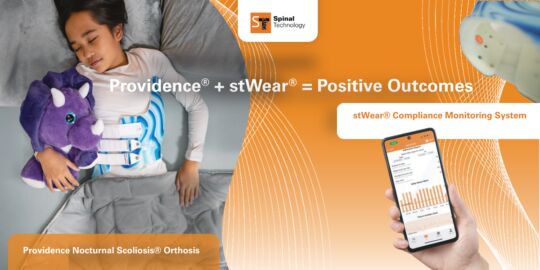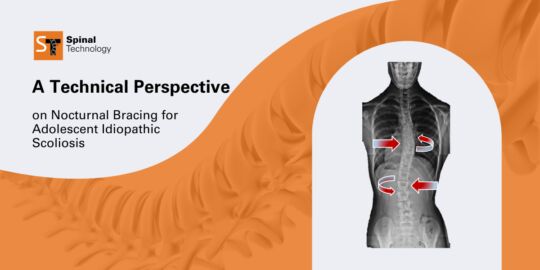Advantages of Nocturnal Bracing
Orthotic Management of Adolescent Idiopathic Scoliosis (AIS)
Section 6
Historically, full-time bracing has been the most prominent and widely accepted method for the conservative management of Adolescent Idiopathic Scoliosis. Over the years, many variations of design have been introduced, with each one claiming to offer exceeding benefits over its predecessors. There’s no shortage of research comparing various iterations of full-time orthoses, yet very little evidence exists to really demonstrate any significant and repeatable advantages of one over all others. Ultimately, the effectiveness of any orthosis relies on meeting just a few principles and requirements; in-brace correction (reduction of Cobb and rotation); alignment and balance; and, of course, patient compliance. The combination of those criteria for success can create some complicated scenarios when it comes to treating actual patients, especially those required to wear a brace for 18 to 22 hours per day. The challenges most often stem from the need for the patient to be upright and mobile. That alone contributes to the majority of the complications faced in traditional full-time brace design.
With nighttime bracing, most of those challenges do not exist. There are significant advantages to bracing at night that not only simplify brace design and allow for more targeted corrective forces, but greatly impact compliance, providing for better outcomes. When the patient is at rest in a recumbent position, the muscles are relaxed and no longer resisting the corrective forces. In this state, righting reflexes become inactive and body positioning, stance, and balance are of no concern. The patient experiences little to no irritation, as they are not sitting, standing, or walking. The recumbent position also eliminates the need for complex brace design to counteract gravity. Additionally, this makes it possible to take true advantage of growth rates and modulation of the vertebra.
As patient flexibility increases and muscle activity decreases, patients are able to tolerate much greater corrective forces. Effective manipulation of the spine, by the use of targeted hyper-corrective pads, is much more achievable at night. The results, in the case of the Providence Brace, is significant correction of all curve types, averaging 98% in-brace and exceeding upwards of 115% in some cases.
Related Links
Need more information?
Contact our Customer Service Team at 800 253 7868. We'll be glad to help you with your question.
Initial Correction Results*
| Brace Type | Study Clinician | Percentage of Correction |
|---|---|---|
| Milwaukee | Carr et al. | 55-60% |
| Boston | Emans et al. | 50% |
| Wilmington | Basset et al. | 50% |
| Miami | McCollough et al. | 50% |
| Charleston | Price et al. | 73% |
| Providence | d'Amato et al. | 98% |
This magnitude of correction creates a major advantage to obtaining highly successful results for bracing at night. The impact these rates have on the ultimate outcomes is due to the fact that the majority of growth occurs at night, during sleep. Studies have shown that the largest output of HGH (Human Growth Hormone) occurs shortly after entering deep sleep Stage 3 sleep), typically peaking between 12am and 2am. Considering the rates of growth throughout the night, this is the most advantageous time to be leveling off the forces across the growth plates. According to Heuter Volkman Law, balancing these forces will allow for even growth. Additionally, when considering the starting asymmetry of the vertebra, hyper-correction of the curve may accelerate growth on the concave side beyond the rate of the convex side, reversing the course towards a more corrected state as opposed to just halting progression. Taking corrective action with nocturnal bracing may provide the best chance of having the greatest impact on patients with Adolescent Idiopathic Scoliosis.
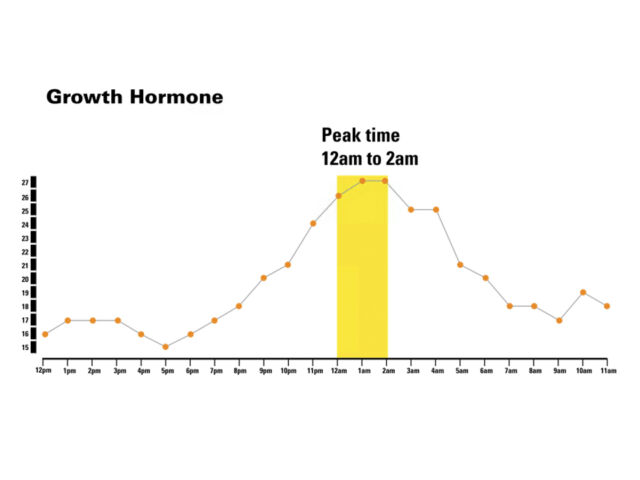
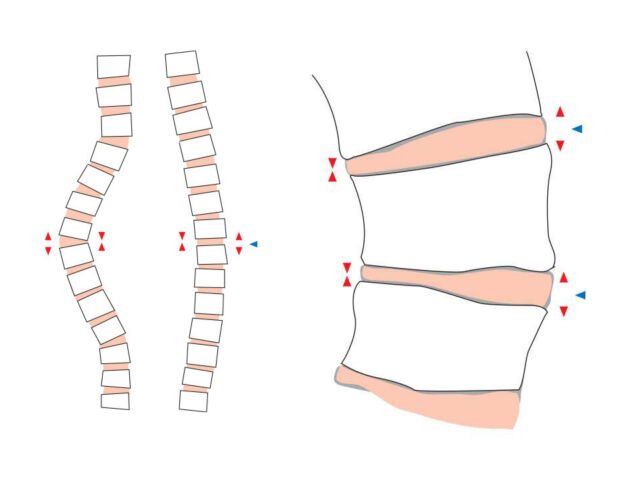
Heuter Volkman Law suggests that leveling the forces across the growth plates, will allow for symetrical growth.
